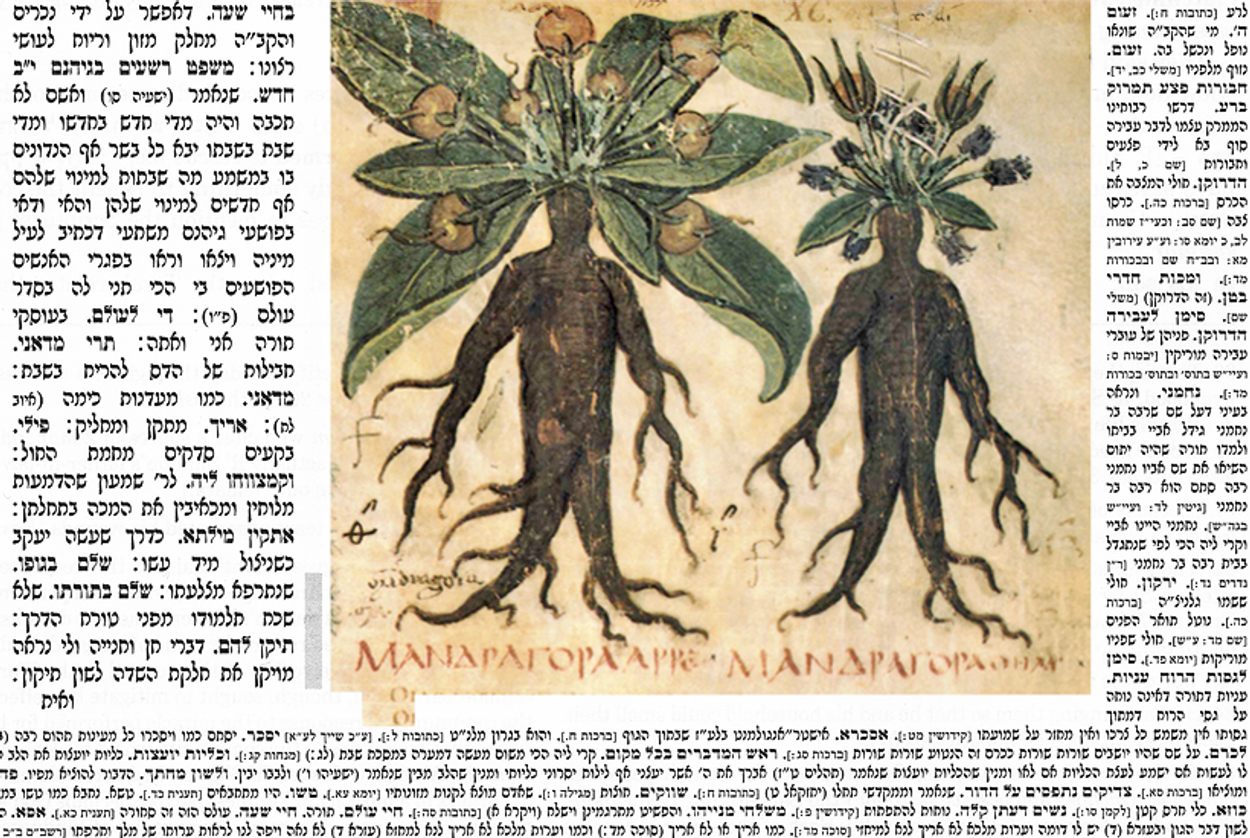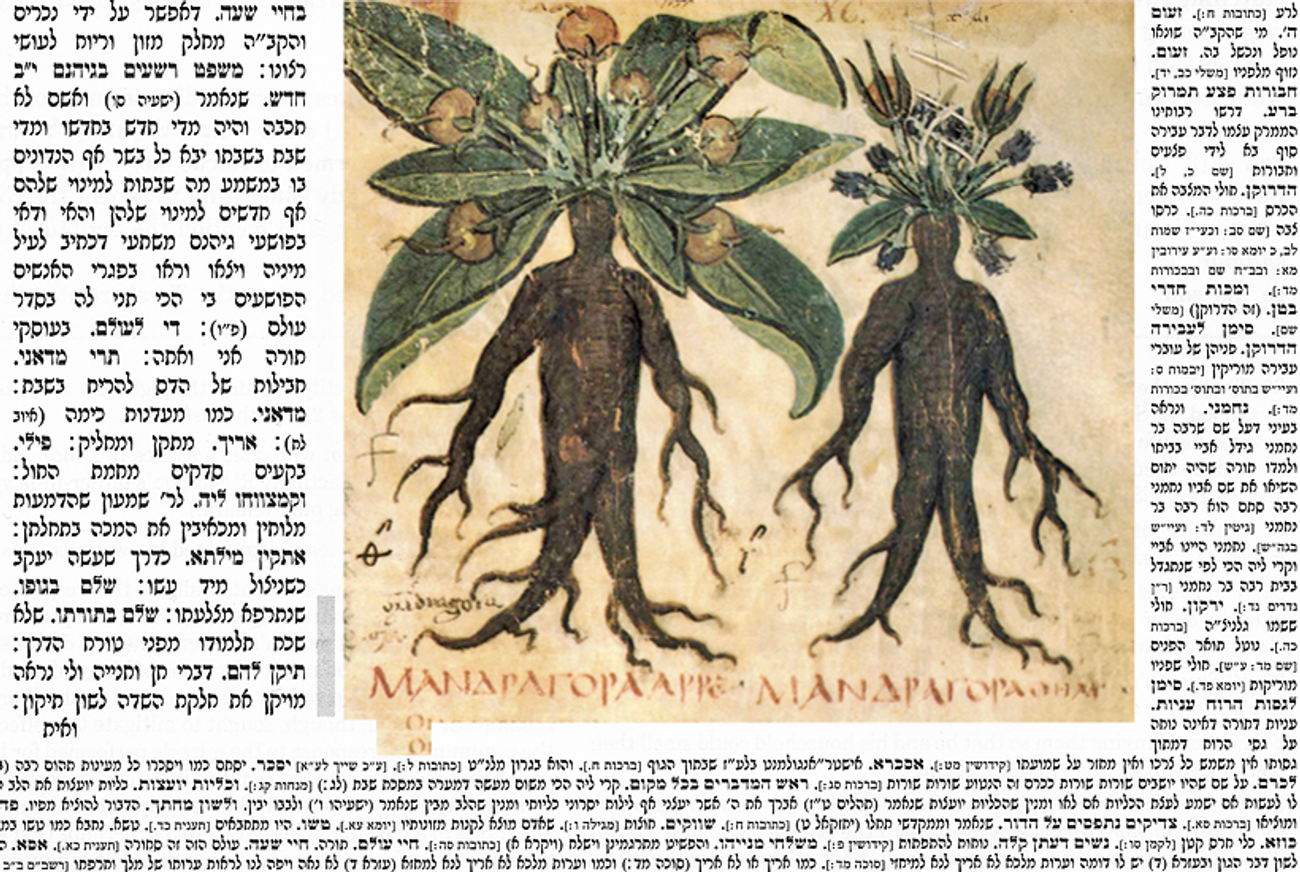The Talmud’s Difficulty Is What Makes the Talmud ‘Talmudic’—And Unlike the Law
Daf Yomi: In rabbinic Judaism, study is not merely a pragmatic enterprise, but a religious act in itself




Literary critic Adam Kirsch is reading a page of Talmud a day, along with Jews around the world.
When it comes to love and sex, as with most other areas of human behavior, the rabbis are realists. In last week’s Daf Yomi reading, we saw that there are 15 categories of relationship which render it illegal for a woman to marry a man. Yet sometimes, it must be acknowledged, a man and a woman would get married even though their relationship was forbidden. Such relationships were not necessarily incest as we understand it today. Jewish law, for example, forbids a man to remarry a woman he has previously divorced; such a relationship is termed an “abomination” in Deuteronomy. Yet in Yevamot 11b, the rabbis acknowledge that such a couple might remarry even though they weren’t supposed to. Say that the husband in this remarriage then dies: Is his brother obligated in levirate marriage to his sister-in-law, even though, legally speaking, the remarriage was invalid and she should not be his sister-in-law at all?
To Rabbi Chiyya bar Abba, this was an easy question, to be resolved through an a fortiori inference. A divorced woman is forbidden even to her ex-husband in marriage; surely, then, she is forbidden “all the more so” to his brother. But this still leaves a secondary question: What is the status of the remarried woman’s rival wife? Ordinarily, if a man is forbidden to marry his dead brother’s wife, he is also forbidden to marry all her rival wives. But does that hold in this case, where the remarried woman’s marriage is legally invalid? Chiyya believes that it does not; the a fortiori argument is strong enough to invalidate the levirate obligation, but not strong enough to invalidate the rival wife as well.
Say, however, that the brother does not want to marry either of his sisters-in-law—neither the one who was divorced and remarried, nor her rival wife. With which one should he perform the ritual of chalitza, which dissolves the levirate obligation? He only has to perform chalitza once to be rid of his obligation to all of his brother’s wives; yet it matters which wife he chooses. That is because undergoing chalitza is legally equivalent to a divorce, and a woman who has been divorced is legally ineligible to marry a priest. In this case, however, of the two wives in question, one has already been divorced—that is the remarried wife, whose remarriage to her first husband followed a divorce. That wife is therefore already ineligible to marry a priest, while her rival wife might be perfectly suitable.
Therefore, the rabbis conclude that the brother must perform chalitza with the remarried wife, so as not to spoil the marital chances of the rival wife. This is to act in accordance with the principle, formulated by Yehuda HaNasi, that “a person should not pour the water from his well when others are in need of it.” Waste is always wrong, even if it is your own property you are wasting. Likewise, it would be wrong for a man to spoil his dead brother’s wife’s future marital chances, even if it makes no difference to him who she marries.
Complex as this situation might appear, it is child’s play compared to some of the truly mind-bending hypotheticals that the rabbis raised in this week’s reading. We have often seen in the Talmud that the rabbis devote just as much attention to extremely unlikely possibilities as to real-world scenarios. This is, indeed, one of the things that make the Talmud “Talmudic” in the pejorative sense. Why, the impatient reader might wonder, spend so much time analyzing situations that surely would never arise in real life? Yet it is crucial to remember that, in rabbinic Judaism, the study of the law is not merely a pragmatic enterprise, like going to law school today. The study of Torah is a religious act in itself. The law forms a complete and perfect logical system, and all of its ramifications are equally valuable parts of that system. In American law, one sometimes hears the maxim “hard cases make bad law”: The more unusual and complex the case, the less suitable it is to serve as a precedent. The rabbis believe just the opposite: The law is never more fascinating to them than when it is difficult.
That is how you end up with a problem like the one in Yevamot 9b, which I will try to describe, without any certainty that I’ve gotten it exactly right. Ordinarily, as we have seen, a man is forbidden to marry both a woman and her sister. (A commenter on last week’s column astutely noted that Jacob the patriarch clearly violated this rule, by marrying both Leah and Rachel; but then, as another commenter pointed out, Jacob lived before the Torah was given.) This means that if two brothers marry two sisters, and one of the brothers dies, the survivor is discharged from his levirate obligation, since he cannot marry his wife’s sister. And yet, Rav claims, there is a scenario in which “the woman who is forbidden to this brother is permitted to that brother, and the one who is forbidden to this brother is permitted to that brother.” How is this possible?
The answer involves adding brothers, so that instead of just two there are four: Call them, A, B, C, and D. Say that two of the brothers, A and B, marry two sisters, E and F, each of whom has a daughter from a previous marriage—call them X and Y. Now, imagine that C marries X and D marries Y. This means that E is both C’s sister-in-law and his mother-in-law, while F stands in the same relation to D.
Now, what happens if A and B both die without having produced children? Then their widows, E and F, would “come before” the surviving brothers, C and D, for levirate marriage. Ordinarily in this situation, the law is that neither brother can marry either sister. That is because each brother is considered obligated to both sisters, and in a sense already married to them, since levirate marriage is considered less a new marriage than a continuation of the widow’s first marriage to the dead brother. But it is illegal for a man to marry two sisters, which means that his connection to both sisters is invalidated. In that state of affairs, neither C nor D could marry E or F.
However, our hypothetical added another wrinkle: C is married to E’s daughter and D is married to F’s daughter. Thus C is doubly forbidden to marry E—first as her son-in-law, and second as her sister’s potential husband—and the same holds true for D and F. Now, you might think that this double prohibition would also apply to the other sister: That is, if C is doubly forbidden to marry E, he would be just as forbidden to marry F. But in fact, the double prohibition to one sister actually cancels out the prohibition to the other sister.
To see why, remember that a man is forbidden in levirate marriage to two sisters because he is considered equally obligated to both of them; he can’t marry one without marrying the other. In this particular situation, however, C is not equally obligated to E and F. In fact, he is not obligated to E at all, because she is his mother-in-law. (The same holds true of D and F.) This means that C is actually perfectly free to marry F, because he is under no obligation to E, his mother-in-law; and D is free to marry E, because he is under no obligation to F, his mother-in-law. In this way, we find a situation in which “the woman who is forbidden to this brother is permitted to that brother,” and vice versa.
This is hard enough—certainly harder than the average LSAT logic problem. But what really clinches the difficulty is that this chain of reasoning, which I have tried to follow step by step, is not laid out in the Talmud at all. The Gemara simply quotes Rav to the effect that “it is possible” to find a scenario where “the woman who is forbidden to this brother is permitted to that brother”; it does not actually explain what that scenario is. To figure it out, I have relied on the suggestions and diagrams of the Koren Talmud. But imagine learning this passage of Gemara the way countless generations of Jewish students learned it: in the original, highly compressed Aramaic, with no visual aids, simply a teacher’s voice and a book open in front of you. At such moments, you realize that a Talmudic education was more than just training in law; it was mental calisthenics of a difficulty that almost no modern students are expected to cope with. And you start to understand that, if Jews in the modern age have made disproportionate contributions to fields like mathematics, those generations of Talmudic training must be in large part to thank.
***
To read Tablet’s complete archive of Daf Yomi Talmud study, click here.
Adam Kirsch is a poet and literary critic, whose books include The People and the Books: 18 Classics of Jewish Literature.
Adam Kirsch is a poet and literary critic, whose books include The People and the Books: 18 Classics of Jewish Literature.